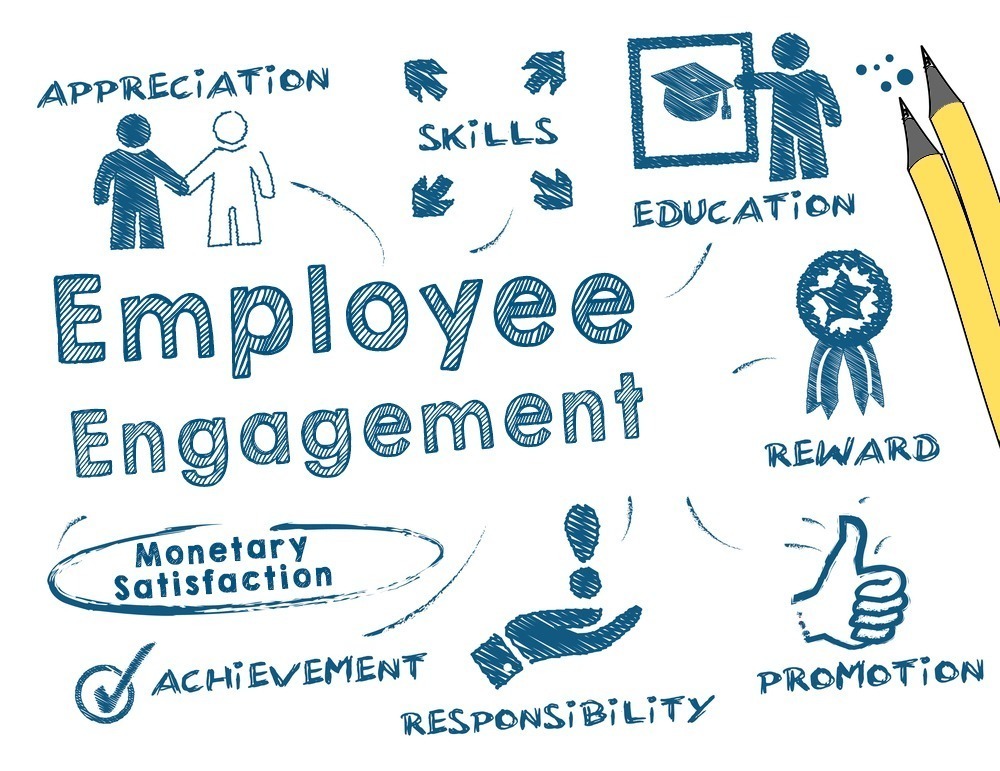
What is Employee Engagement?
We all know that engaged employees lead to higher performing, more resilient organizations. This ideal state is what many organizations aspire to, but what exactly is employee engagement?
When I asked a client how they’d define employee engagement they said, “It’s allowing employees to feel a part of the system. Making them feel autonomy.”
I polled another client and he said, “It’s employee happiness and if people feel good about showing up to work.”
If you were asked to define employee engagement, what would you say?
Employee engagement represents the levels of enthusiasm and connection employees have with their organization. It’s a measure of how motivated people are to put in extra effort for their organization, and a sign of how committed they are to staying there. Importantly, employee engagement is an outcome that depends on the actions of an organization, particularly the actions driven by leadership and managers.
Employee Engagement Surveys
An employee engagement survey measures several factors that contribute to employee performance and retention. Most organizations conduct employee surveys annually, with some opting to increase the frequency to bi-annually or even quarterly. Companies generally use the results of these surveys to drive change and improve organizational culture. I often use the results of these surveys to hone in on exactly what the root cause of disengagement is.
The rest of this article will explain four factors that relate to employee engagement: Leadership, Enablement, Alignment, and Development (L.E.A.D.) and how to use employee engagement surveys to reveal core issues and make concrete positive changes to improve on things like performance, retention and innovation.

L.E.A.D. Questions in an Employee Engagement Survey
Leadership questions refers to communication which is important for people to feel any level of engagement with their company. Do employees feel like leadership is communicating a vision that motivates them? Informing people about what is happening builds a foundation for communication from leadership at the most basic level.
Enablement questions answer questions surrounding whether people have the day-to-day things they need to do their work and develop. Learning and development is a consistent driver of employee engagement across industries, so how employees respond to this question is important. Low scores towards “enablement” questions indicate that the organization should look into what things people are lacking when it comes to doing their job. Perhaps it is providing learning and development opportunities or it could be time to evaluate the company’s systems and processes and potentially invest in new infrastructure support.
Alignment questions aims to understand if employees know what they need to do to be personally successful and if their objectives align with the company’s overall objectives. Questions in this category try to determine whether employees believe they are appropriately recognized for their achievement. Low scores indicate that employees are not feeling recognized for their work, and potentially, that they are unsure of the definition of success in their role. Ultimately, if people don’t get any recognition for making progress, it’s hard for them to stay motivated.
Finally, Development questions try to determine if managers communicate good career opportunities to employees. Development questions are frequently the top drivers of engagement at work. Finding out why people aren’t feeling that the company contributes to their development is important so that organizations can take action and communicate the change.
Why Measure Employee Engagement?
With an accurate measure of employee engagement, HR teams can take meaningful action on what matters to people at work. Many organizations want to improve employee engagement because it has positive flow-on effects on things like performance, retention and innovation.
If you don’t measure employee engagement, you have no way to take informed action on improving company culture, performance or peoples experiences at work.
If you’re ready to collect employee feedback at scale and take action through employee engagement surveys, having the right questions in your survey is an important step. If you’re looking to see what questions provide you with the best insights for action, feel free to connect with me – let’s chat!